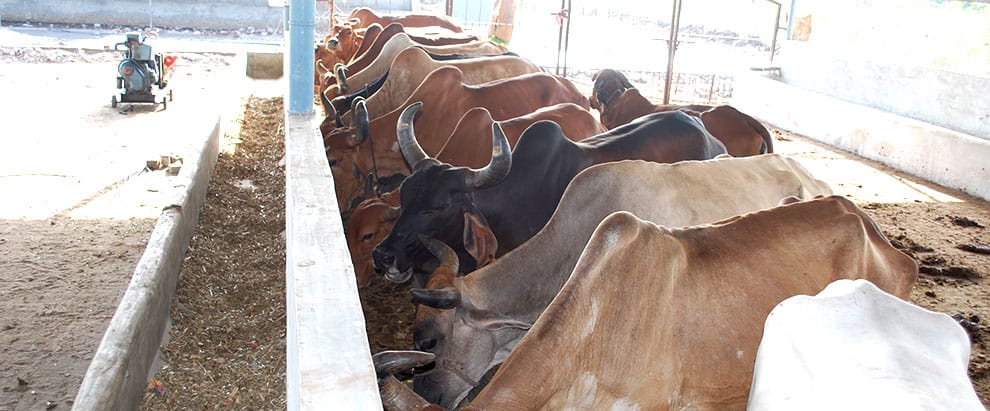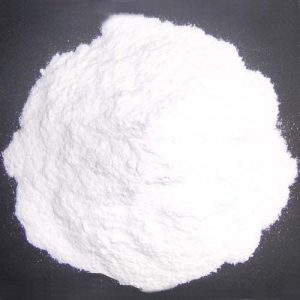
When Cows be Fed Rumen Bypasss Fat ?
Strategies for Feeding fat to Dairy Cows
Energy requirement in lactating cows
High producing cows require larger amounts of energy for meeting lactation requirements, alone. For example, a cow yielding 15 kilos of milk (3.6% fat and 3.5% protein) will require around 15 Mcal net energy in daily feed. This is around 15- times the energy an average Indian consumes in his diet.
A cow’s basal diet should consist of good quality roughages although these are not rich in energy density. It is a challenge to determine correct forage to concentrate ratio in cattle feed. Adjusting for protein, fat, and cost will further complicate the feed formulation process. Cattle diet should not contain more than 6% fat on a dry matter basis. Most of the feed ingredients are not rich sources of fat hence feed formulation to adjust fat becomes difficult. In a lactating cow providing high energy, density feed is important to overcome reduced feed intake after calving. One of the options to get around this is to supplement purified fat. Fats have a higher energy density than carbohydrates and protein. There is one constraint that feeding excess of fat can reduce dry matter intake.
Farmers should know the situations when it is necessary to supplement fat. It is also important to know how to select from bypass products available in the market.
Milk Yield and fat supplementation
It is difficult to draw a thumb rule on milk yield threshold and concentrate supplementation as a lot will depend on the overall feeding strategy. In my practice, on a conservative side, I advise that a cow yielding 15 kg milk of 3.5% fat can be maintained only on good quality fodder (silage) and a minimum one kg concentrate. In such a feeding system supplementing fat is important as in general forages and fodder are not rich sources of fat. To better understand my point you need to first convert your cow’s milk, which may be higher than 3.5% fat, to corrected milk (FCM) by using the following formula:
| FCM (3.5%) = 0.35 * M + 18.57 * F
where, M = quantity of milk in kg, F = amount of fat in kg, ‘M’= quantity of milk |
Let us calculate FCM (3.5%) in the case of a Gir cow yielding 8 kg milk with 6% fat. M= (8 x 6/100) = 0.48) After entering these values in the equation
FCM (3.5%) = 0.35 * 8 + (18.57 * 0.48) = 11.71 kg. This means the Gir cow is giving 11.7 kg milk of 3.5% fat and hence as per my advice such a cow can be fed on forage/fodder based feed. The important fact to remember is that the forage quality should be good, preferably silage and dry matter intake for the cow is met. Supplementing fat to medium-yielding cows will only increase cost and we can not expect any extra benefit. Feeding fat makes good sense only in high producing transition cows as during peak yield period, summer heat, and transition period.
Can cows be fed vegetable oil?
Many dairy farmers think that supplementing vegetable oil in feed, especially during the transition period, is good for cow health and milk production. Commonly fed vegetable oil, such as from, palm or coconut are saturated fat which is a rich source of saturated fat. Saturated fats do not have any double bonds and carry three fatty acids on a glycerol molecule. Vegetable oils are bad for health. Oils are triglyceride having three saturated fatty acids bound to glycerol. Oils are not good for cows because although rumen bacteria can use the glycerol part, fatty acids can’t be digested. Thus feeding vegetable oil harm good rumen bacteria.
In the case of unsaturated fats, fatty acids have one or more double bond, examples are canola, corn, sunflower. Because of cost farmers do not normally feed these oils. Feeding unsaturated fat may lead to the trans-fat formation which is not good for cow or consumer health. Vegetable oil when mixed with feed coats dietary fiber reducing its digestion. Feeding large amounts of vegetable oil (exceeding 150 ml per serving) can reduce milk fat production. Dairy farmers should understand that supplementing vegetable oil is not the correct way to boost milk production. In India, the most abundant sources of fat are whole soybean and cotton seeds. De-oiled cakes from these sources are commonly fed to cows. Several plants and animal by-products, such as distiller’s grains and, fish meal, contain up to 10-12% fat and make for beneficial supplements to feed.
What is a rumen bypass fat?
All fats are rumen bypass because fat is not digestible in the rumen. Commercially “rumen bypass” fats or protected fat means the product which has melting point higher than rumen temperature. Therefore Bypass fat is in crystal ore hence inert or safe to rumen bacteria. Additionally, in the free flow powder form, it is easy to mix in the feed. There are three methods of producing dry fats for animal feeds. The most common method is mixing vegetable fatty acids with calcium oxide to form insoluble calcium soaps. These are labeled as ‘calcium salts of long-chain fatty acids. To derive these products, we have to mix calcium with free palmitic acid. Calcium salts of long-chain fatty acids have lower fat content compared to other bypass fat but due to high digestibility, these provide more energy.

Considering the ill effects of feeding fat on rumen health, the general recommendation is to feed calcium-soap in the range of 200 to 600 grams per day. The exact dose will depend on the cow’s capacity for milk production and the permissible cost to the farmer.
Here are some important points to consider when selecting bypass fats:
|
Fat supplementation in hot weather
During summer due to high DHI feed intake in cows is reduced, which compromises energy available for milk production. To enhance the energy density of feed, mixing bypass fat is beneficial. We should take care to avoid overfeeding of unprotected fat such as from whole oilseeds. The better option here is to feed bypass fat since it will not affect rumen fermentation. In hot weather, fat supplementation could be 7% on DM basis.
Bypass fat to improve fertility in cows
During peak lactation under the influence of hormones, energy is partitioned for milk production, even at the expense of body reserves. If animals are fed on low energy feed, cows would lose body condition. This also results in cows not returning to cycle delaying the expression of first heat after calving. The number of trials has shown that feeding fat during peak milk production (up to 100 days of lactation) can improve be reproductive performance lowering calving to conception interval and minimize loss of body weight. Bypass fats also aid in an increasing ovarian follicular size and regulate hormone patterns. Research has proved that feeding cows on higher levels of energy, specialty fatty acids, such as linolenic acid, DHA, or EPA during this period can further improve cows’ reproductive performance.
